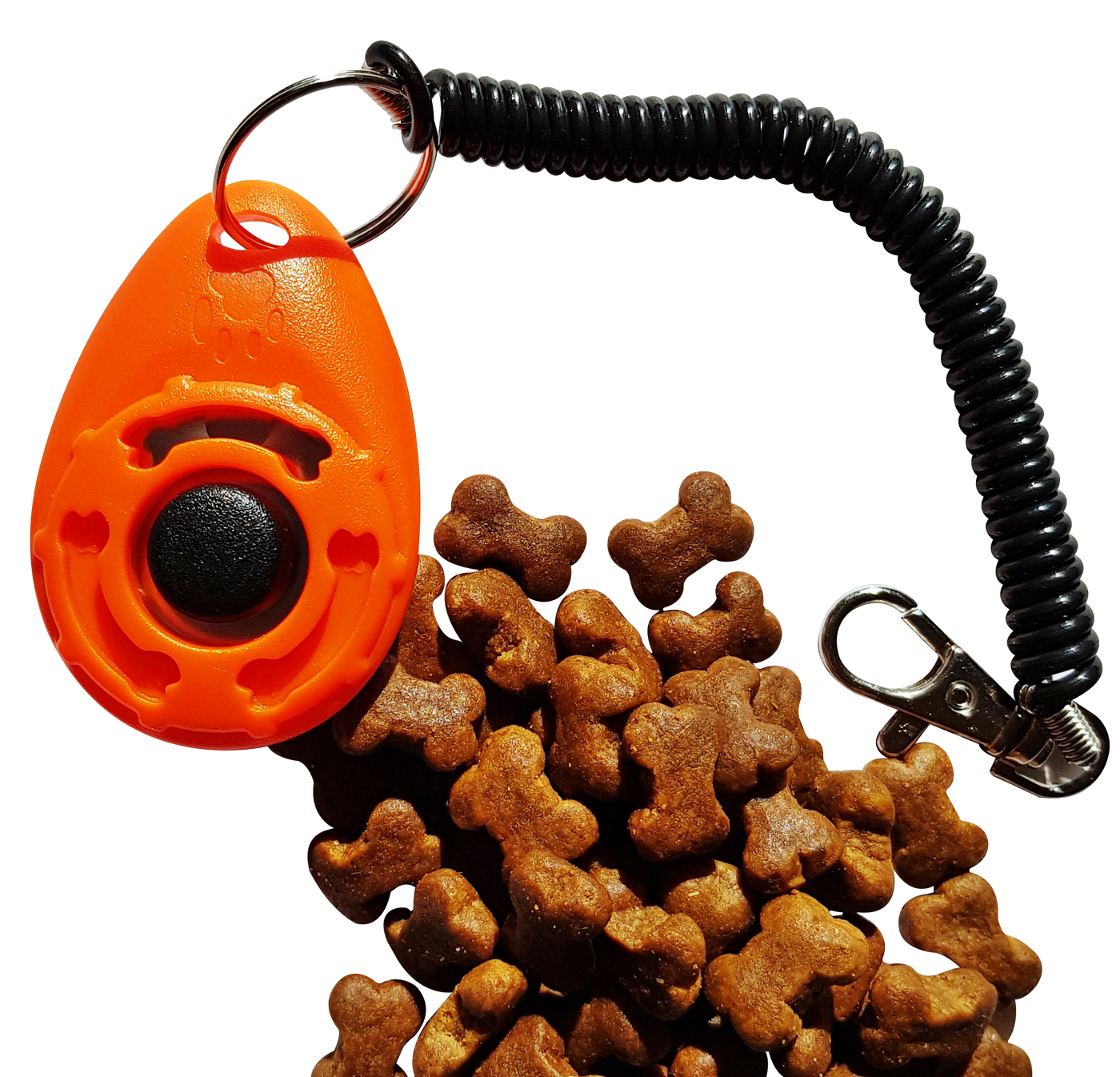


You'll still need to click every timeīy only treating every second, or every third time you help Your pup is very consistent and reliable in obeying your instructions.Īt that point you can start to treat intermittently rather than every Training sessions, as using it as a toy or in any other situation willĮventually (maybe after several weeks, or longer) you'll find Never use the clicker for anything except your puppy clicker

Remember though that puppies have very shortĪttention spans, so keep the sessions short and always end on a positive Use the same puppy clicker training process for any command you.Get his attention and then say "sit" in a firm but friendly way,Īs soon as his little butt begins to touch the floor, click and treat.Once you've practiced like this for a while, and you're sure your little one understands the connection between his sitting and the clickĪnd treat, you can begin to use verbal cues.To begin with, and 3 or 4 sessions a day works well. Remember to click and treat the second his littleīooty hits the floor! 3 or 4 repetitions is enough per training session.Sitting down and 'capture' this behavior by 'clicking and treating' as Begin by trying to catch your pup in the act of.The process is the same for each one, so let's take a look at the simplest (and usually the first) command, the 'Sit'. You can teach your puppy all the basic obedience commands such as 'Sit', 'Down', 'Stay', 'Leave It' and so on. End the session after a dozen or so click-and-treats. Just click and treat! At this point the treats are 'freebies' and you're just aiming to have your pet associate the noise with a treat. Load the clicker by 'clicking and treating' 10 - 12 times in quick succession without asking your puppy for any specific behavior. To 'load' the clicker - this is how you teach your puppy that the To start your puppy clicker training off in the right way, you need Luckily using a clicker isn't complicated, and if you follow the steps outlined here you won't have any problems getting it right. If they learn the 'wrong' thing first time around, or build a bad habit, it can be challenging to convince them that they need to do things a different way! Puppies are creatures of habit, and they're also like little sponges and learn very fast. There are a few simple steps to follow to make sure that you get started off on the right foot - and paw. You'll surprised how quickly your pup understands what's happening and how eager he is to please you. Puppies learn by association and he needs to make the RIGHT association from the very beginning.Īs you get more experienced with this training technique, you'll be able to use a vocal cue such as "sit" or "down", and then by 'clicking and rewarding' when your puppy follows your instructions you'll beef-up those cause-and-effect associations. This is because you want to make it clear to him that the behavior he's engaging in right now, is what you're rewarding him for.

It's important that you only 'click' during the required behavior, not after it's completed.įor example if you're teaching the 'sit' command, click and treat the second your pup's butt begins to touch the floor, not when he's in a complete sit. This is because the 'click' is immediately followed by a reward/treat and is designed to let little Fido know that he's done something that makes you happy!Īt first, you will be 'clicking and treating' for any desirable behavior you see - such as when your puppy sits down, lays down quietly, comes to you when you call his name etc. When it comes to clicker dog training, the most important thing to get right is the timing of the 'click'.


 0 kommentar(er)
0 kommentar(er)
